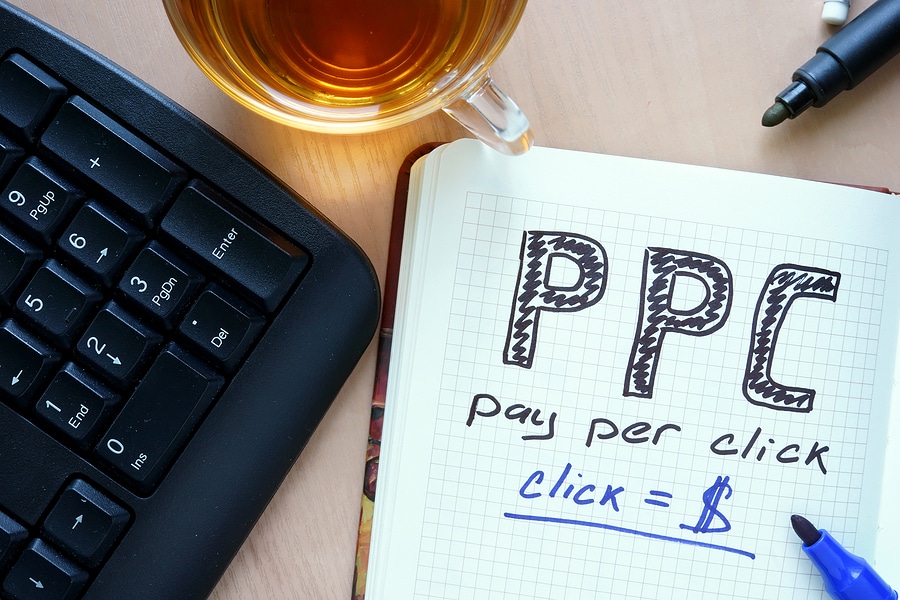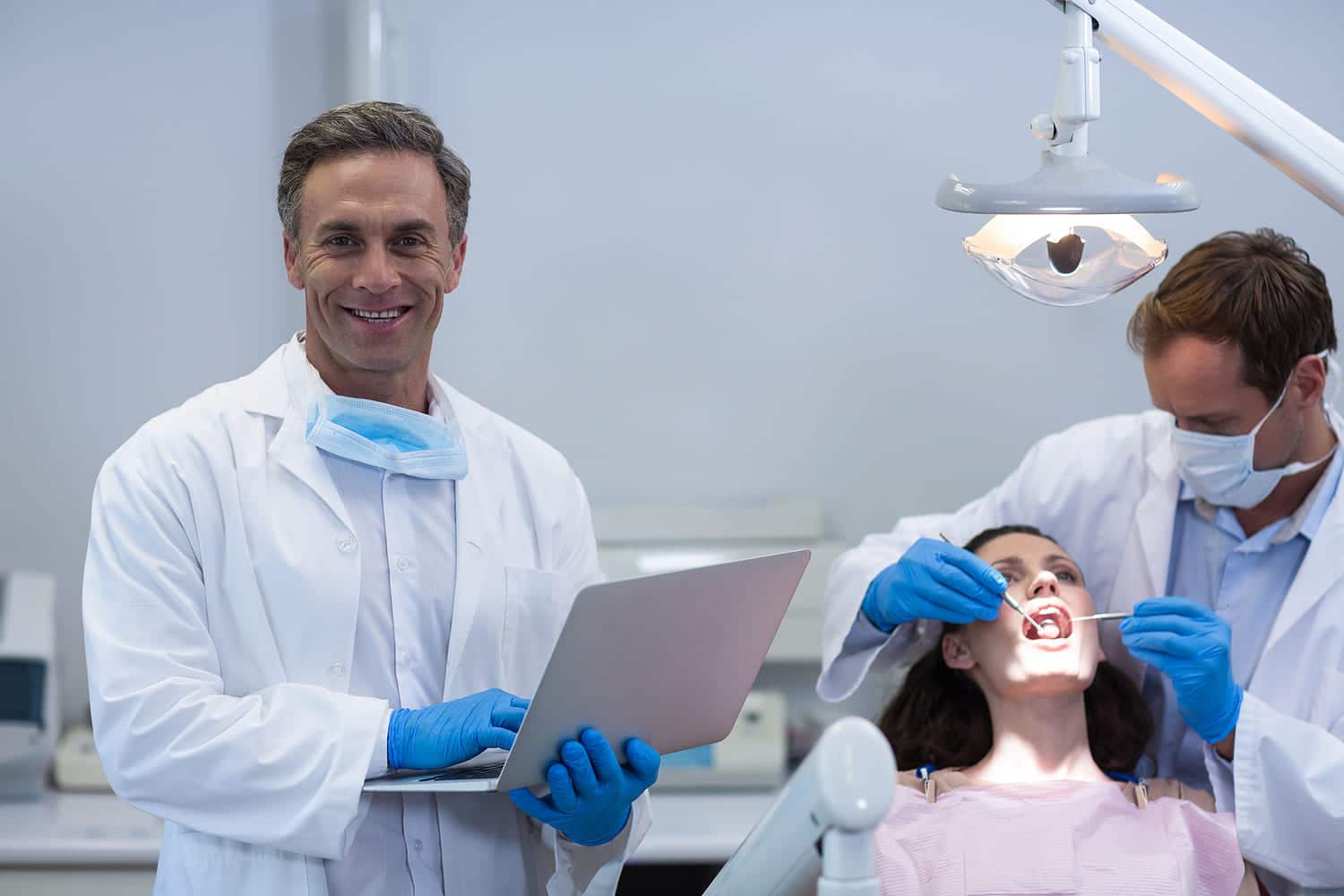Pay-per-click (PPC) advertising has become a key part of digital marketing for many orthodontic practices. In a world where people turn to search engines to find everything, including orthodontic care, PPC gives orthodontists a way to reach potential patients directly. With orthodontist PPC as a part of Ortho Marketing, ads show up at the top of search results when someone searches for services like braces, Invisalign, or general orthodontics.
For orthodontists, PPC offers an immediate way to attract patients who are actively looking for treatments. Unlike organic search engine optimization (SEO), which can take time to build results, PPC allows orthodontic practices to get in front of their ideal audience quickly. This is especially valuable in competitive markets where standing out is essential.
Understanding PPC Advertising

PPC, or Pay-Per-Click, is a type of online advertising where you pay a fee each time someone clicks on your ad. It’s a fast way to drive traffic to your website because it places your ad at the top of search results for relevant keywords. Google Ads and Bing Ads are two popular platforms that orthodontists can use to run these campaigns.
When someone types in a search term like “orthodontist near me” or “Invisalign for teens,” your ad can appear in the top spots of the search engine results page. The advantage of PPC is that you only pay when someone clicks on your ad, meaning you’re not paying for views that don’t generate potential patient interest. This method ensures that you are targeting the right audience—people who are already searching for orthodontic services.Partnering with a dental PPC agency ensures campaigns are optimized for maximum return and attract the right patients at the right time.
How PPC Works for Orthodontists
Orthodontist PPC campaigns are built around relevant search terms related to orthodontic care. For example, keywords like “Invisalign,” “braces for adults,” or “affordable orthodontics” are commonly used to attract prospective patients. When users search for these terms, ads designed by the orthodontist will show up.
The key benefit is the ability to create targeted ads that reach individuals who are explicitly looking for orthodontic treatments. Orthodontist PPC campaigns can be customized to target local patients, making sure your practice is visible to people in your community. PPC also allows you to adjust your campaigns in real time, ensuring you get the most out of your advertising spend. Using dental pay per click campaigns, orthodontists can precisely target patients based on search intent and location.
Benefits of PPC Advertising for Orthodontic Practices
Pay-Per-Click (PPC) advertising offers a range of benefits for orthodontic practices looking to grow their patient base. Unlike traditional marketing methods, PPC is highly targeted and measurable, making it an ideal option for orthodontists. Below are some key benefits of running a PPC campaign for your orthodontic practice.
Instant Visibility
One of the biggest advantages of PPC is that it gives your practice immediate visibility in search results. Unlike SEO, which can take months to see significant results, PPC ads are shown as soon as your campaign goes live. This makes it easier to attract new patients who are actively searching for orthodontic services. For orthodontists, being visible when potential patients are looking for treatments like braces or Invisalign is critical.
Budget Control
PPC allows orthodontic practices to set their own budgets, giving you full control over how much you spend. Whether you want to spend a few hundred dollars or thousands, PPC is flexible. You can allocate your budget based on how much traffic you want to generate, and you only pay when someone clicks on your ad. This makes PPC a cost-effective option, especially for orthodontists who want to get the most out of their marketing spend without overspending.
Target Specific Audiences
PPC advertising lets orthodontists target specific audiences, making it easier to connect with the suitable patients. You can target based on location, ensuring that your ads only appear to people in your local area. This is especially useful for orthodontists who want to focus on attracting patients from specific neighbourhoods or cities. Additionally, you can narrow down your audience based on age or search intent, which means your ads will reach people who are more likely to book a consultation.
For instance, you can run ads targeting searches like “best orthodontist near me” or “Invisalign for teens,” making it easy for potential patients to find your practice when they need orthodontic services. Targeting these specific searches with a PPC campaign ensures that you’re attracting high-intent patients who are more likely to become long-term clients.
Measurable ROI
One of the standout features of PPC is its ability to provide measurable results. Orthodontists can track exactly how many clicks, phone calls, or form submissions their PPC ads generate. This allows you to measure your return on investment (ROI) in real-time, so you can see exactly how well your campaigns are performing. You’ll know which keywords, ad copy, and landing pages are driving the most conversions, giving you the data you need to optimize future campaigns.
For orthodontists, working with a specialized dental PPC marketing agency provides industry-specific insights and custom strategies that general firms may overlook.
Key PPC Strategies for Orthodontists
To get the most out of a PPC campaign, orthodontists need to employ strategies that maximize visibility, improve conversion rates, and ensure a high return on investment. The success of PPC advertising lies in careful planning and constant optimization. Here are some key strategies orthodontists can use to ensure their campaigns perform well.
Read the full PPC Strategy for Orthodontists
1. Keyword Targeting for Orthodontic Services
The foundation of any successful PPC campaign is the right keywords. Orthodontists need to focus on keywords that potential patients are actively searching for. Terms like “braces for adults,” “Invisalign near me,” or “affordable orthodontist” are high-intent keywords that can drive qualified traffic to your website. Using tools like Google Keyword Planner, orthodontists can discover which terms are most commonly searched in their area and create a keyword list that aligns with their services.
Orthodontists should also focus on using long-tail keywords, which are more specific phrases potential patients are searching for. For example, instead of just “braces,” you could target “clear braces for adults.” These keywords are often less competitive and can bring in highly targeted traffic. By carefully choosing your orthodontist PPC keywords, you can reach the patients most likely to schedule a consultation.
2. Ad Copy Tips
Writing compelling ad copy is essential to attract clicks and conversions. The goal of your ad copy is to grab the attention of potential patients and encourage them to click on your ad. Keep the copy concise, clear, and focused on the patient’s needs. Use language that speaks directly to the pain points of your target audience. For example, ads promoting “free consultations” or “flexible payment plans” can resonate with patients concerned about costs.
Make sure each ad has a strong call-to-action (CTA). A good CTA tells the viewer exactly what to do next, such as “Book Your Free Consultation Today” or “Call Us to Learn More About Invisalign.” A well-crafted CTA can make a significant difference in your campaign’s click-through rate (CTR) and overall success.
3. Landing Pages that Convert
Once a potential patient clicks on your ad, they need to be directed to a relevant and optimized landing page. Orthodontists should avoid sending users to a general homepage and instead create dedicated landing pages for each service. For example, if your ad is about Invisalign, the landing page should focus solely on Invisalign treatment, providing detailed information and an easy way for visitors to book a consultation.
Ensure that the landing page is simple to navigate, has fast load times, and features a prominent CTA. Forms for consultations should be easy to fill out, with as few fields as possible to prevent drop-offs. The more user-friendly the page, the more likely visitors will turn into patients.
4. Tracking and Optimizing Your Campaign
PPC advertising isn’t a “set it and forget it” strategy. Orthodontists need to continuously monitor their campaign’s performance to ensure it’s delivering the desired results. Use platforms like Google Analytics and Google Ads to track important metrics such as clicks, conversions, and cost per acquisition (CPA). If certain keywords or ad copy aren’t performing well, don’t hesitate to make adjustments.
Regular optimization of your PPC campaign is essential for improving ROI. By reviewing performance data, you can make informed decisions about which keywords to bid on, which ads to update, and how to refine your audience targeting. A well-optimized PPC campaign can continue delivering new patients for months or even years, provided it’s properly managed. An experienced dental PPC advertising partner can monitor these changes and provide actionable recommendations.
How to Set Up a Successful Orthodontist PPC Campaign
Setting up a successful PPC campaign for your orthodontic practice requires careful planning and execution. While it might seem overwhelming at first, breaking the process into manageable steps can help ensure your campaign runs smoothly and delivers the best possible results. Here’s a step-by-step guide on how to get started with orthodontist PPC.
1. Account Setup and Initial Research
The first step in setting up a PPC campaign is to create an account on a platform like Google Ads or Bing Ads. These platforms allow orthodontists to run ads on search engines and even on display networks like YouTube. During the account setup, you’ll be asked to input basic information, including your location, time zone, and billing details.
Once your account is ready, you’ll need to perform keyword research. Use tools like Google Keyword Planner or SEMrush to identify the most relevant keywords for your orthodontic services. For example, search terms like “Invisalign for teens,” “braces for adults,” or “orthodontist near me” are common keywords that patients search for. Ensure you focus on high-intent, location-based keywords to attract local patients who are actively looking for orthodontic care.
2. Crafting Your Ads
With your keywords in hand, the next step is to create compelling ads. Each ad should be concise, persuasive, and relevant to the keywords you’ve selected. Include specific details that will appeal to potential patients, such as free consultations, patient reviews, or promotions. Remember, ad copy should highlight the benefits of choosing your orthodontic practice over competitors.
Don’t forget to incorporate a strong call-to-action (CTA) that encourages potential patients to take the next step. A CTA like “Book Your Free Consultation” or “Schedule Your Appointment Today” can be the difference between a successful ad and one that doesn’t convert.
3. Setting Your Budget and Bidding Strategy
Once your ads are ready, it’s time to set your budget. One of the benefits of PPC is that you have complete control over how much you spend. Start by setting a daily or monthly budget that fits your practice’s financial goals. You can also set limits on how much you’re willing to pay per click, ensuring that you stay within your advertising budget.
Choosing a bidding strategy is also crucial. For beginners, Google Ads offers automated bidding strategies that can help maximize results. However, orthodontists with experience in PPC may prefer manual bidding, which allows for more control over how much you’re willing to spend on specific keywords.
4. Launching and Monitoring Your Campaign
After setting your budget and bids, you can launch your PPC campaign. Once it goes live, your ads will start appearing in search results, and you’ll begin attracting traffic to your website. However, the work doesn’t stop here. Regularly monitor your campaign’s performance using tools like Google Ads and Google Analytics.
Keep an eye on key performance indicators (KPIs) such as click-through rates (CTR), conversion rates, and cost-per-click (CPC). If certain ads or keywords are underperforming, adjust them accordingly. For example, if a keyword isn’t driving traffic, try replacing it with a more specific term. Alternatively, if an ad is receiving clicks but not converting into consultations, consider changing the CTA or adjusting the landing page.
5. Optimizing and Scaling Your Campaign
PPC campaigns are dynamic, which means continuous optimization is necessary to ensure success. Review your campaign’s performance regularly and look for areas for improvement. Testing different ad variations, updating keywords, or refining audience targeting can all boost your campaign’s effectiveness.
Once your orthodontist PPC campaign starts delivering positive results, you can consider scaling it. This might involve increasing your daily budget, expanding your keyword list, or running additional campaigns targeting new orthodontic services or demographics. Scaling your campaign strategically ensures that you continue to attract a steady stream of new patients without overspending.
Common Mistakes to Avoid in Orthodontist PPC Campaigns
While PPC advertising can be effective for orthodontists, there are common mistakes that can reduce your campaign’s success. Here are key pitfalls to avoid:
1. Ignoring Negative Keywords
Failing to use negative keywords can result in wasted clicks. For example, if someone searches for “orthodontist jobs” or “orthodontist salary,” you don’t want your ad to appear. Add negative keywords to filter out irrelevant traffic and focus your budget on attracting actual patients.
2. Weak or Missing Call-to-Action (CTA)
A PPC ad without a strong CTA won’t drive conversions. Make sure to include clear, actionable phrases like “Schedule a Free Consultation” or “Call Today.” A strong CTA guides potential patients to take the next step, improving your conversion rates.
3. Not Optimizing for Mobile Users
With many people searching from smartphones, your PPC ads and landing pages must be mobile-friendly. Ensure fast load times, easy navigation, and simple design for mobile users. Optimizing for mobile improves the user experience and increases conversions.
4. Neglecting Campaign Monitoring
PPC campaigns need regular monitoring. Track key metrics like click-through rates (CTR) and conversion rates to make ongoing adjustments. Failing to monitor your campaign can lead to wasted ad spend and missed opportunities.
5. Sending Traffic to a General Homepage
Directing clicks to a generic homepage instead of a specific landing page reduces conversion chances. Ensure each ad leads to a relevant page focused on the service being advertised, such as Invisalign or braces, with a clear way to book an appointment.
FAQs About Orthodontist PPC Advertising

1. How much does orthodontist PPC cost?
The cost varies depending on factors like the competitiveness of your keywords and your location. You can set daily or monthly budgets, giving you control over how much you spend. Typical costs can range from a few dollars per click to more, depending on the keyword’s demand.
2. Is PPC better than SEO for orthodontists?
PPC provides immediate results, while SEO is a long-term strategy. PPC allows orthodontists to quickly appear in search results and attract potential patients, making it a good option for practices that need fast results. SEO, on the other hand, takes time to build but provides lasting organic visibility.
3. How do I know if my PPC campaign is successful?
PPC platforms like Google Ads provide detailed performance metrics such as clicks, conversion rates, and cost-per-click (CPC). Orthodontists can track how many people clicked on their ads, scheduled appointments, or called their office, helping you gauge the effectiveness of your campaign.
4. Can I run a PPC campaign myself, or should I hire a professional?
While it’s possible to run PPC campaigns on your own, hiring a PPC professional or agency can maximize your results. Professionals can help with keyword research, ad creation, and ongoing campaign optimization, ensuring you get the best possible return on your investment.
5. How long does it take to see results from PPC?
PPC campaigns can deliver results almost immediately after they go live. Once your ads start running, they appear in relevant search results, and you can begin receiving traffic and leads within hours or days. However, optimizing your campaign for maximum performance may take a few weeks.
6. Can PPC help with local orthodontic competition?
Yes, PPC is highly effective for local orthodontic practices. By using location-based targeting, you can ensure your ads appear to potential patients within a specific geographic area, making it easier to compete with other local orthodontists and attract nearby patients.
7. What types of PPC ads work best for orthodontists?
Search ads (text ads shown in search results) tend to work best for orthodontists because they target patients actively looking for services like braces or Invisalign. Display ads (banner ads on websites) and video ads (such as YouTube ads) can also be effective for brand awareness and retargeting campaigns.
8. Can PPC be used alongside other marketing strategies?
Absolutely! PPC works well when combined with other strategies like SEO, social media marketing, and email campaigns. While PPC brings immediate results, SEO helps build long-term organic traffic, and other methods can enhance patient engagement and retention.
Dominate Your Market with Ortho Marketing’s PPC Expertise
At Ortho Marketing, we specialize in PPC, orthodontist search engine optimization, and a collection of other digital marketing strategies that deliver real results. Whether you’re just starting or need online marketing for orthodontists to boost your current campaigns, our expert team in Westchester, NY, is here to guide you. From targeted ads to comprehensive SEO strategies, we know how to attract new patients and grow your practice. Don’t let your competition get ahead—let’s craft a powerful PPC strategy together.
Contact Ortho Marketing today at 914-236-1522 and see how we can elevate your practice!





